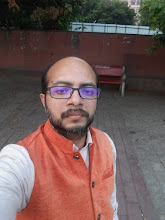"Greatest on the virtue of
humbleness
An eloquent man who maintains the state of an ascetic
An icon of
simplicity but of great dignity"
Sree Chithira Thirunal Balarama Varma, the last ruling Maharaja of Travancore, was adorned with the aforesaid qualities. The visionary leader laid the foundation for a revolutionary change in the social, political and cultural sphere of Travancore. His success in making Travancore a prominent princely state in India helped pave the way for Kerala state.
Born
on November 7, 1912, Balarama Varma adopted the regnal name 'Sree Chithira
Thirunal', as his birth star was Chithira. The prince was outstanding in his
studies and well-versed in English, Malayalam and Sanskrit. He excelled in
science and literature too and had a special fondness for photography and
painting. Sree Chithira Thirunal Balarama Varma became the Maharaja of
Travancore at the age of 12, upon the death of his uncle, but a regent was
appointed to govern the state until he reached maturity. He formally
ascended the throne of Travancore in 1931 and ruled the state until 1949.
Sree
Chithira Thirunal challenged superstitions and social inequalities, thus
conveying a moral message to society. He travelled via sea routes in order to
make a mockery of the superstitions related to the sea. The Maharaja used
his foreign trips to collect details regarding the cultural and artistic forms
of other countries. The information gathered on lifestyle, patriotism,
scientific development, healthcare and education was successfully utilised in
the creation of modern Kerala.
The
Maharaja of Travancore made the ‘Temple Entry Proclamation’ in 1936 abolishing
the ban on low-caste people from entering temples. The epoch-making
declaration, which emphasised social emancipation, was the first of its kind in
India, and Mahatma Gandhi hailed it as an ‘Epic of Travancore’. This silent,
bloodless revolution was a harbinger of many social changes in the
state.
Sree
Chithira Thirunal was the first ruler in Asia to abolish capital punishment. He
held the distinction of being the last surviving Knight Grand Commander for
both the Order of the Star of India and the Order of the Indian Empire. It's
difficult to list all his contributions, but many in the fields of education,
transport, agriculture, employment, industry, health, and tourism stand worthy
of notice.
He
believed that education can play a key role in the progress of the nation. Sree
Chithira Thirunal was instrumental in establishing various educational
institutions, including the University of Kerala, Swathi Thirunal College of
Music and College of Engineering in Trivandrum. As part of his reforms to
the educational system, he introduced compulsory primary education and a
kindergarten system. Another noteworthy contribution was the establishment of
colleges for fine arts and a department of marine biology.
Development of public transportation facilities was a priority during his reign. The Maharaja was pivotal in establishing an airport in Trivandrum and building the first concrete road in India connecting Trivandrum and Kanyakumari. The pier in Trivandrum port was extended and the ports in Kollam, Kulachal, and Kanyakumari were renovated as well.
Sree
Chithira Thirunal recognised that the soul of his motherland was deeply
intertwined with the agricultural sector. He promoted a scientific approach to
agriculture, encouraging the use of new techniques and methods to improve food
production. The Maharaja established new farms and research facilities focusing
on cultivating crops that were important for the local economy and had the
potential for export, such as rice, coconut and pepper. He also set up a system
to provide farmers adequate financial aid for crop damage caused by natural
disasters.
He
established the Public Service Commission and ensured reservation for the
backward communities. Sree Chithira Thirunal successfully used his foreign
trips to Austria, United Kingdom, Belgium and Rome to invite foreign
investments and create job opportunities.
Sree
Chithira Thirunal spearheaded the establishment of heavy industries in the
state. It was during his reign that the major industries which form the
backbone of Kerala's industrial landscape came into existence. Aluva FACT,
Travancore Rubber Works, Travancore Titanium Products, Kundara Ceramics, Aluva
Textile Factory, Quilon Pencil Factory and Aluva Aluminium Factory were some of
the industries launched by him.
He
was keen on infrastructure development in the health sector. X-ray and surgical
units equipped with modern technology were inducted in major hospitals apart
from launching ophthalmic clinics and speciality hospitals for the treatment of
tuberculosis. Circulars were sent out to encourage vaccinations and hold
medical camps in an effort to prevent malaria. His greatest contribution was
the provision of land for the Sree Chitra Thirunal Institute of Medical
Sciences and Technology in Trivandrum.
Kerala's
first hydroelectric project in Pallivasal owes its origin to the personal
initiative and inspiration of the Maharaja. The project laid the foundation for
the state's power infrastructure and was crucial in meeting electricity needs
for decades.
Sree
Chithira Thirunal played a significant role in establishing Thekkady as a major
tourist destination. He recognised the area's rich biodiversity and took
steps to protect it. This led to the establishment of the Periyar Wildlife
Sanctuary, which is now known as Periyar National Park.
Swathi
Thirunal College of Music is a perfect example of his love for
music. Sri Chitra Art Gallery in Trivandrum portrays Sree Chithira Thirunal
as a true admirer of art. The gallery has a vast collection of paintings
that extend beyond India, including works from Japan, China, and Indonesia. It
is one of the few art galleries in India, which boasts the finest exhibits of
both ancient and modern styles.
Sree
Chithira Thirunal’s tenure ushered in the dawn of a new era – an era of
political progress and social reform. He infused a fresh life into the administration,
and the state pulsated with a new life. His Highness exhibited a rare degree of
titanic will, which is the essence of statecraft. He will be remembered in
Indian history as a great benefactor of humanity.


